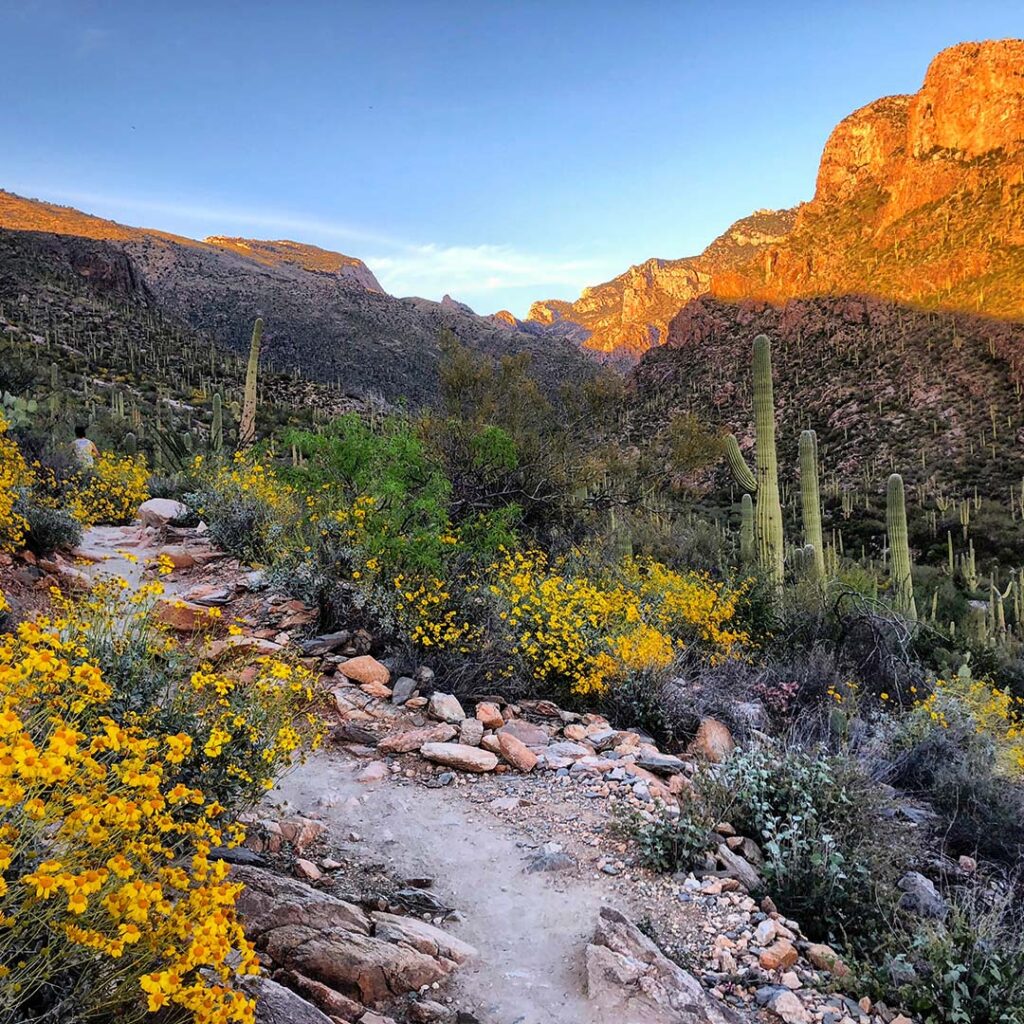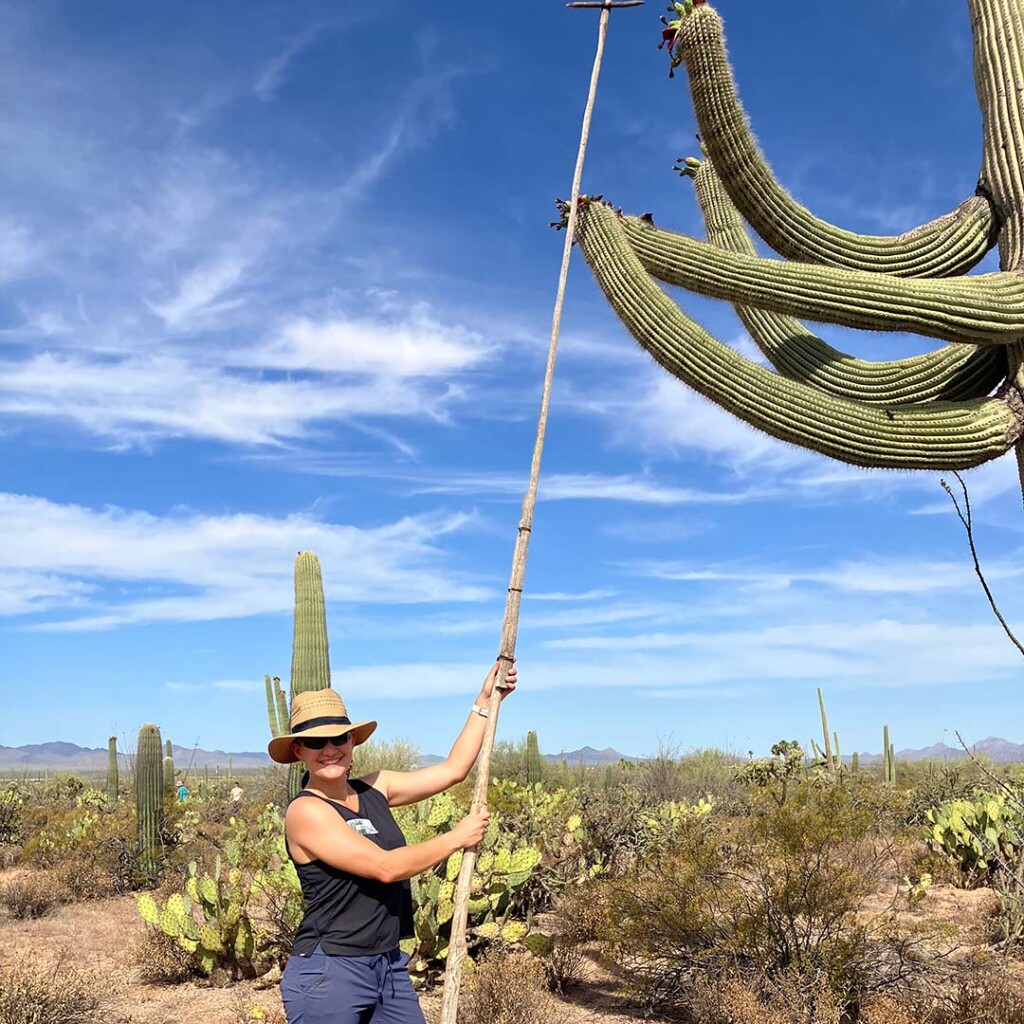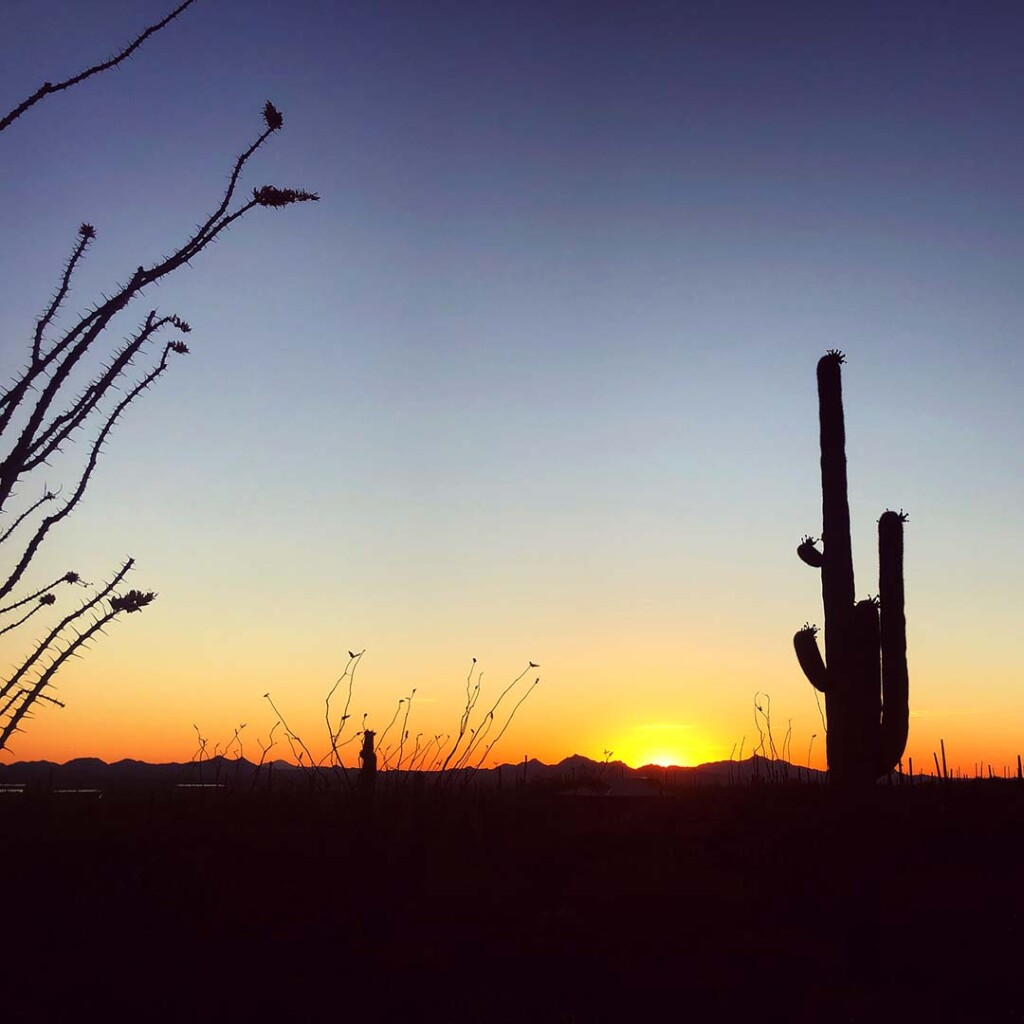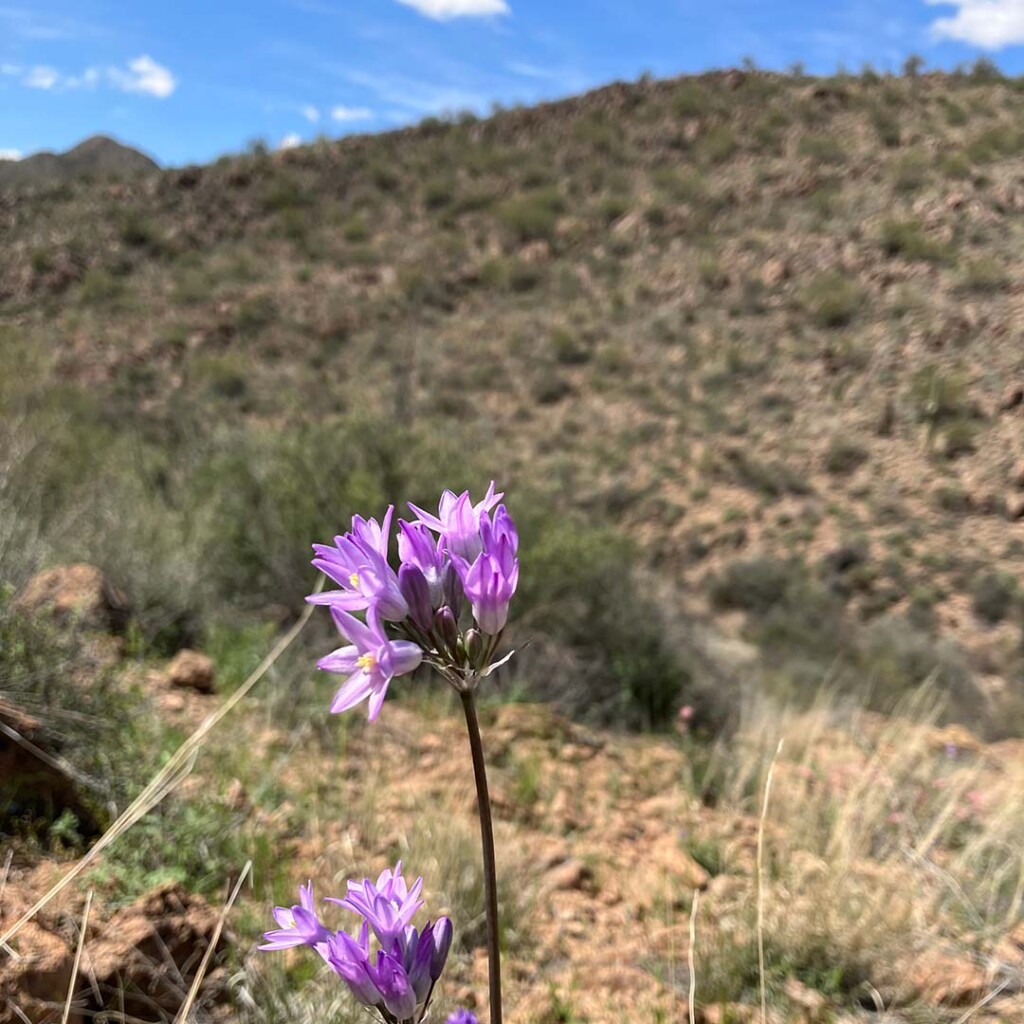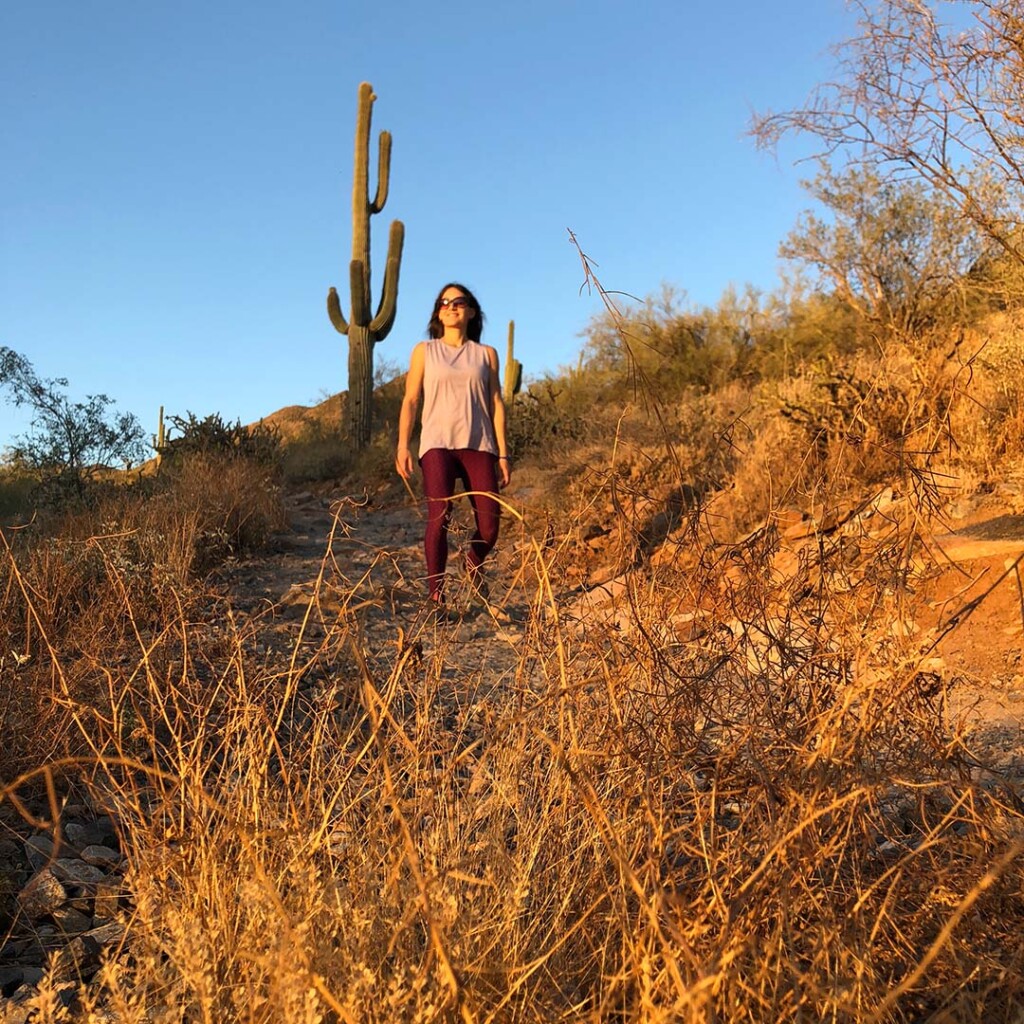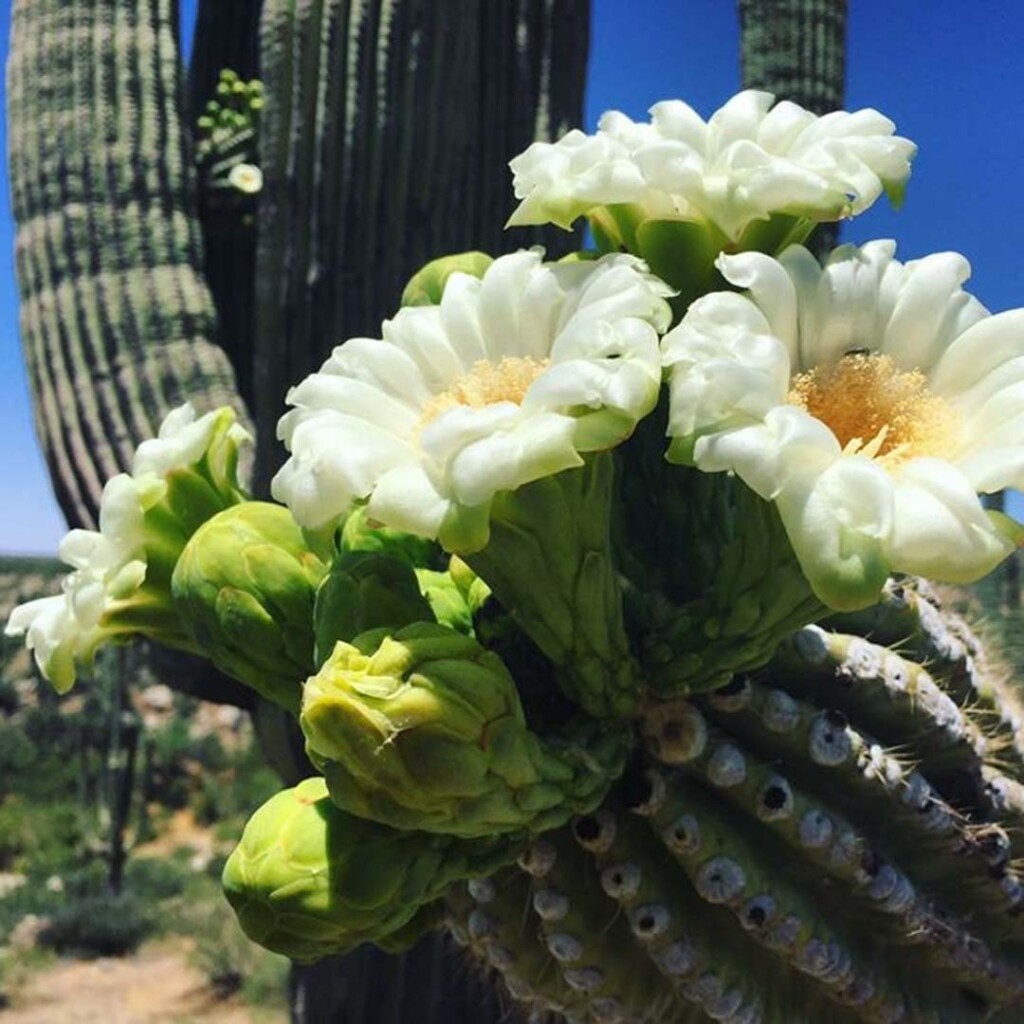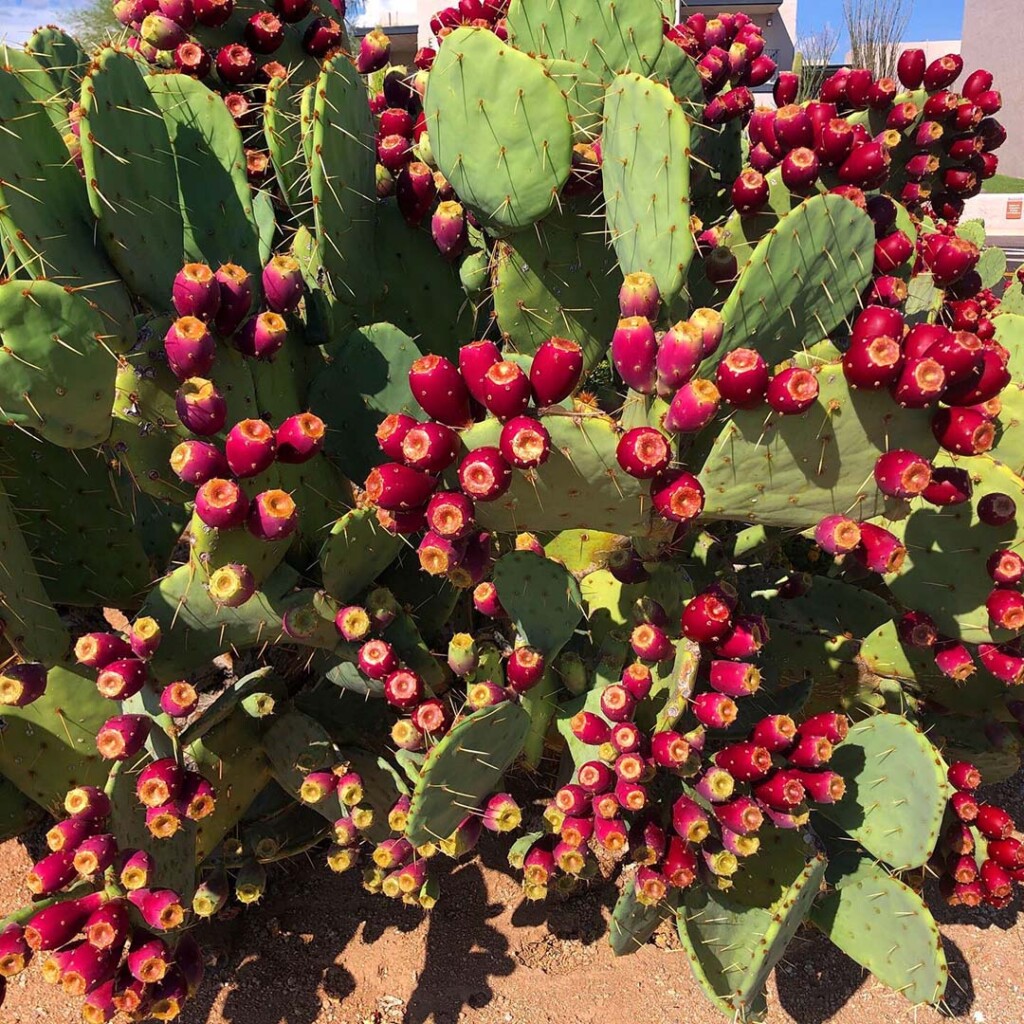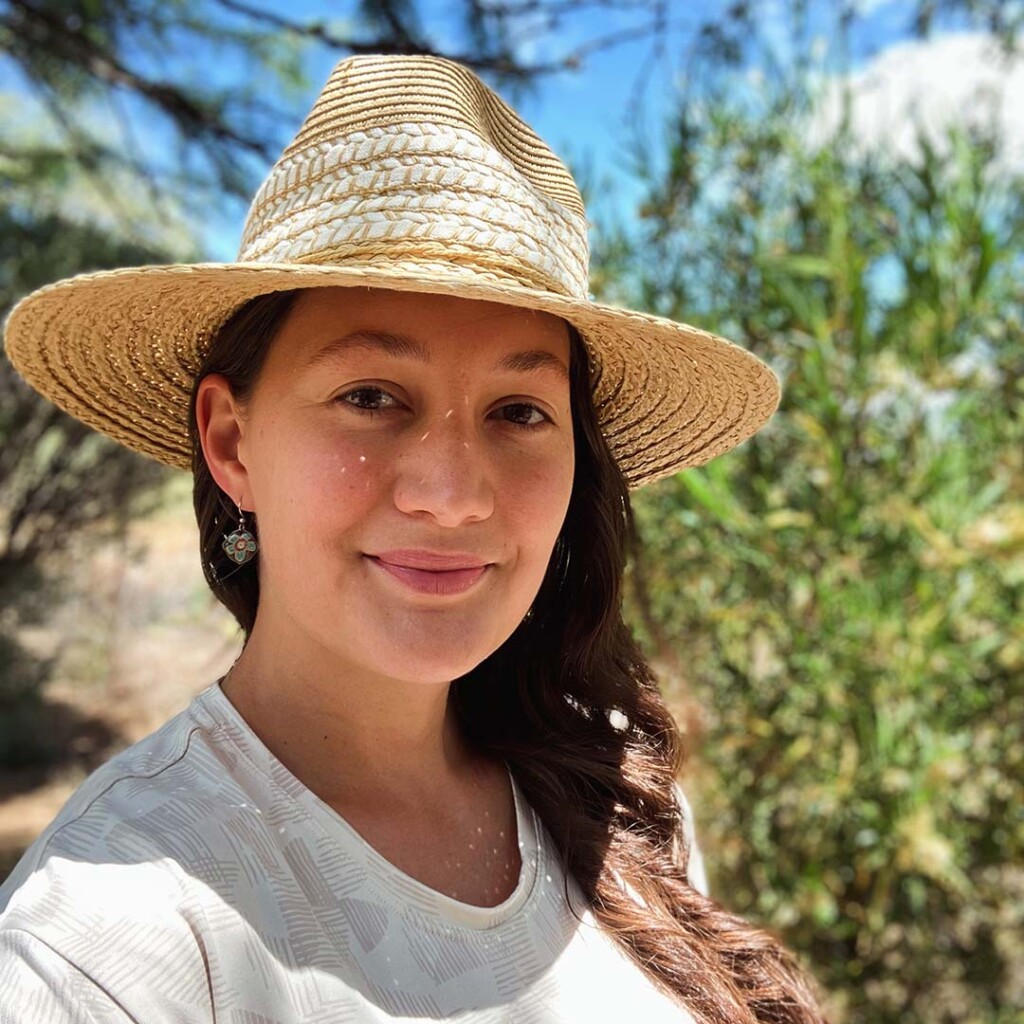Guest Blog and Photos by Sabine Harrington
This is part of a series of blogs on “Wellness and Nature Connections.” Stay tuned for more insights from other voices throughout the Sky Islands.
Chances are, if you’re reading this, you’re already a nature lover and advocate for Sonoran Desert conservation. We are fortunate that Tucson is home to so many environmental nonprofits, like Sky Island Alliance, whose mission is to preserve and protect our unique ecosystem and all the life forms in it. I know I’m preaching to the choir so far! Let me introduce myself. My name is Sabine, and I’m a proud 3rd generation native of Tucson. Some of my most vivid early memories are of walking desert trails, hearing the buzz of cicadas and late afternoon coo of doves, smelling the intoxicating creosote-laden air of a monsoon … desert things. Every cell in my body feels the anticipation before a storm. I’d like to think that I’m part of a shared experience — the very same one that ground squirrels, mule deer, javelina, coyotes, lizards, and hawks are experiencing.
I’m sure many of you can relate to this “shared desert consciousness.” I can’t prove it with science, and I don’t think I need to. But what I would like to offer here is my unique lens on conservation from an exercise physiologist’s perspective.
Philosophy
Traditionally, the conservation space has largely been managed by professionals in ecology, botany, wildlife biology, soil sciences, hydrology, and other related fields. And this makes sense, considering that conservation efforts are directed at improving the health of our flora, fauna, soil, and watersheds. But I think for conservation to be as successful as possible, we must find ways to personally connect to our environment, much in the way that we should be connected to our own body.
As an exercise physiologist, my work is in the human sphere of health. I currently work in clinical cardiac rehabilitation, where I follow patients from the day after open-heart surgery all the way through to the last day of their outpatient workouts. The goal of this program is to help patients get reacquainted with their bodies, nurturing and gradually pushing themselves as they regain confidence in their abilities. This process is easier for those who already have a strong connection to their body, and harder for those who have never really related to their body in a conscious physical way. In my experience, people are more likely to take care of their bodies if they are taught how to love and understand them, and this is a lifelong journey. This parallels my personal approach to conservation. I believe that people will organically appreciate and defend the Sonoran Desert if they are taught to view it as a living entity, even an extension of themselves. This goes hand in hand with the belief that we are nature. In fact, in the O’odham language and many other Indigenous languages, there is no actual word for “nature” because there is no distinction between oneself and the surrounding environment. Thus, if we view the desert’s health and our health as interdependent, good stewardship will naturally follow.
This interdependent relationship between self and desert (or wherever you reside) can be viewed from several different points. There is of course the spiritual and cultural lens, evident in the creation stories of the Tohono O’odham, Akimel O’odham, and Pascua Yaqui peoples. And there is the ecological lens, which focuses on the relationships between plants, animals (including humans), fungi, and bacteria. Less often discussed is yet another view that focuses on the interdependence of human physiological health with the health of the environment. As an exercise physiologist, I think this is a unique way to approach conservation, and I’m excited to discuss it here. I would like to coin a new term, “physiological conservationism,” which will refer to this perspective.
How the Desert Benefits Human Physiology
It’s no secret that time out in nature improves our mental health. A study from the UK found that people who spent at least two recreational hours a week outdoors reported significantly greater health and well-being, and this held true regardless of age or chronic health condition. There is also evidence that time out in nature can help buffer the effects of loneliness and social isolation. Some experiments have found that “being exposed to natural environments improves working memory, cognitive flexibility and attentional control, while exposure to urban environments is linked to attention deficits” (“Nurtured By Nature”, Weir, 2020). It makes sense that our brains would recalibrate in the environment in which they evolved, rather than in cities where we are bombarded by fluorescent lights and 5G signals. Connecting to nature helps us reconnect to ourselves.
From a cardiovascular perspective, it’s also clear that time in nature improves our well-being, far beyond the calories burned. Going for a 30-minute nature walk or a 5-mile run are both beautiful ways to engage with our environment. Regular movement is also good for our healthspan and lifespan. Exercising at moderate aerobic intensities strengthens our myocardium, respiratory and skeletal muscles, and it delivers oxygen to every cell in our bodies. Exercise also causes an increase in the release of brain-derived neurotrophic factor (BDNF), a protein that has been “associated with better cognitive performance, attention, and spatial memory” (Fernandez-Rodriguez et al, 2022). And, of course, being active burns calories, which may help with weight loss or maintenance.
But what’s different about exercising outside compared to the gym? Well, several things. The electromagnetic energy of the sun can be very beneficial for our circadian rhythm. Light entering our eyes communicates to the brain what time of day it is, and this helps regulate our melatonin and serotonin production, which in turn lead to healthier sleep cycles and improved mood stability. The full-spectrum sunlight also has other benefits. When UVB hits our skin, it helps to activate a cholesterol precursor and convert it into the active form of vitamin D3, which is essential for calcium balance, immune function, and cognitive health. Of course, there is such a thing as too much UV exposure, which can be damaging to our eyes and skin. But nonetheless, getting enough sunlight is essential to our mental and physical well-being.
Exercising outside can also teach our bodies how to thermoregulate, which is an important skill. The nervous system, skin, and blood vessels tightly regulate this function. It goes without saying to be smart when it comes to exercising in the heat, which includes consuming enough water and electrolytes and knowing the difference between heat stress and heat exhaustion (or worse, heat stroke). But knowing your limits and engaging in a moderate amount of warm outdoor exercise can help to lower blood pressure in a unique way. Skin blood vessels dilate to dissipate heat from the body, and this vasodilation can have the pleasant effect of lower blood pressure after exercise. I’m sure many of us are familiar with the sensation of deep relaxation after a good hike that just doesn’t compare to the treadmill or stair-stepper at the gym.
One of the best reasons to walk, hike, or run out in the Sonoran Desert is that it is a feast for the eyes (and other senses)! We can deepen our relationship with our environment when we set aside this time not only to be in motion, but to see the bright white saguaro flowers, hear the scratchy cactus wren calls, and smell the seductive creosote aroma. The richness of this experience is what living in the desert is all about. Another benefit that I can personally attest to (now staring at my computer screen) is how helpful it is to let my eyes relax and stare into the distance. Other than driving, being outside is one of the few breaks we get from screens! When we look into the distance, it is the only time our ciliary muscles, which move the eye lens, get to physically relax.
Beyond vision, there are some olfactory benefits of living in the desert, too. University of Arizona ecologist Gary Nabhan has studied desert bathing, like it’s more well known counterpart, forest bathing. According to Nabhan, “the fragrant volatile organic compounds from desert plants may in many ways contribute to improving sleep patterns, stabilizing emotional hormones, enhancing digestion, heightening mental clarity and reducing depression or anxiety.” Many desert plants produce more volatile oils during the summer to protect themselves from harsh conditions; plants, unlike animals, cannot move to escape environmental changes, so instead they produce a variety of phytochemicals to handle the situation, in this case, heat stress. “These compounds are released into the atmosphere even before the rain actually falls and contribute to that incredible surge of anticipation that you feel right before the first raindrop of a thunderstorm. From there, they travel into our lungs and into our bloodstream within minutes,” Nabhan says. It’s like natural aromatherapy! This is an elegant example of how the plants and animals (including us humans) of the Sonoran Desert are intertwined, even at a biochemical level.
I’d like to touch briefly, as well, on native foods of the Sonoran Desert, although this could easily stand alone as its own discussion. The O’odham have extensive knowledge of the edible plants of the Sonoran Desert, which comes from surviving and thriving in such a harsh environment for thousands of years. Many of their traditional foods, such as saguaro fruit (bahidaj), prickly pear fruit (i:bhai), tepary bean (bawi), and mesquite bean (kui-kai) are super dense in nutrients. The cactus fruits are hydrating, high in bioavailable vitamin C, and are a rare source of natural sugars. Tepary beans have a low glycemic index and are high in calcium, niacin, iron, zinc, magnesium, phosphorous, and potassium. Mesquite beans also have a low glycemic index and are high in calcium, magnesium, potassium, iron, and the amino acid lysine. Consuming these high-micronutrient foods as part of your diet can improve your physical health, as well as your connection to the land. You are what you eat, quite literally at a cellular level.
How We Can Protect the Desert
I have highlighted just a few of the many ways that engaging with the Sonoran Desert in a conscious way can improve our cellular, organ system and overall well-being. When we take the time to engage in a conscious relationship with our own bodies, we start to notice and appreciate them better — and we become more capable of taking care of them. The same is true of our relationship with our environment. When we take the time to appreciate the saguaro, the cactus wren, and the ground squirrel, they can become familiar to us, like family, and we begin to have a greater capacity to relate to and take care of them. When we realize that taking care of nature is the same thing as taking care of ourselves, it becomes an easy choice of what to prioritize and build into our daily life and policy decisions. This is what “physiological conservationism” means to me.
Sabine Harrington, MS-RCEP, is a 3rd generation native Tucsonan, a registered clinical exercise physiologist, and owner of Sonoran Wellness Solutions, which includes breath analysis metabolic testing, health coaching, and corporate wellness activities.


